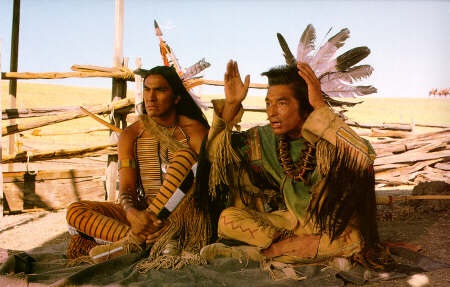Imagine a three time Academy Award winning romantic drama mixed with fantasy narrated from 2005 New Orleans, Louisiana as Hurricane Katrina is coming. Imagine now a story loosely inspired by a 1922 short story by F. Scott Fitzgerald wherein a central character ages in reverse. Mix in the atmosphere and direction of David Fincher, and you get a movie that really intrigues with The Curious Case of Benjamin Button (2008).

The initial task for The Curious Case of Benjamin Button was to introduce the odd relationship with time that would be central to the case of Benjamin Button, the character to be portrayed largely by Brad Pitt. An assist was offered by Peter Donald Badalamenti II, Robert Towers, Tom Everett, Spencer Daniels, Chandler Canterbury and Charles Henry Wyson through the aging that Benjamin experienced through the telling of the story. This notion of something fantastic through time is introduced with blind clockmaker Monsieur Gateau, as portrayed by Elias Koteas. The telling of Benjamin Button’s life begins here through the diary that Caroline, as portrayed by Julia Ormond, is asked by Daisy, as portrayed by Cate Blanchett, to read.

The Curious Case of Benjamin Button therein begins with the backwards clock of memory. Benjamin Button is born as a man whose body shows several afflictions associated with old age in his infant’s body. Thomas Button, as portrayed by Jason Flemyng, finds this development in his son ghastly and responds emotionally, abruptly and quite nearly in a manner most shocking. The salvation for the child is that the elder Button takes mercy of the sort wherein the child is left to a circumstance that allows the story to continue.

It is compassion that convinces Queenie, as portrayed by Taraji P. Henson, to claim the child she names Benjamin as her own. The choice is made while a further choice was being offered by Tizzy, as portrayed by Mahershala Ali, was also on the table. It is paradoxically in the nursing home where Queenie raises the old yet young Benjamin that, at age seven, Benjamin meets Daisy. This lifelong friendship formed in this nursing home becomes a central chorus revealed in what Daisy knew and Caroline and we learn through the film. Cate Blanchett is joined by Elle Fanning and Madisen Beaty in portraying Daisy. Joeanna Sayler and Katta Hules join Julia Ormond in portraying Caroline.

It is following that initial meeting as children that the story of Benjamin and Caroline take their separate ways. Benjamin leaves New Orleans for a work on a tugboat crew with Captain Mike Clark while Caroline goes to New York City, New York to pursue a dance career. Both learn ways of the world, with Benjamin striking up a needed yet unmentionable relationship with Elizabeth Abbott, as portrayed by Tilda Swinton. Jared Harris portrayed Captain Mike Clark.

The exposition of the lives of Benjamin, Daisy, Queenie, Tizzy, and the larger world as experienced in World War Two, Japan, Germany, France and through the years leading to New Orleans in 2005 grants much in the way of romance, drama, and larger lessons about life when looking at life unfolded when told from the point-of-view of lives aging in two separate directions. The Eric Roth screenplay combined with an assist on the story from Robin Swicord offers a sweet rendering of the romantic side of the larger tale being told with perspectives for the male and female leads expressed on equal terms.

A larger theme of this movie, starting with the backward running clock of Monsieur Gateau, was the memorial made to World War One soldiers lost in that war. The notion of the memorial was that the soldiers losing their lives in that war, including Gateau’s son, could come home again and live full lives. This in a sense was the story of Daisy and Benjamin as spoken through the course of the movie. The telling of the relationship Benjamin Button had with his father Thomas Button, and with Queenie, and that Daisy aims to complete for Caroline as the hurricane comes to take the magic of backwards time, is where the curious beauty of the story finds its feet. It is with these elements in mind that I grant The Curious Case of Benjamin Button 4.25-stars on a scale of one-to-five.
Matt – Wednesday, January 13, 2021







